Principal Investigator
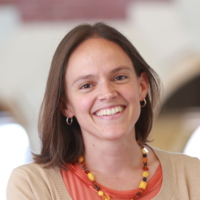
Francesca Russello Ammon, Ph.D. is Associate Professor of City & Regional Planning and Historic Preservation at the University of Pennsylvania Stuart Weitzman School of Design. She is the prize-winning author of Bulldozer: Demolition and Clearance of the Postwar Landscape (Yale University Press, 2016). A cultural historian of urban planning and the built environment, she studies the changing social, material, and cultural life of 20th century American cities. Particular areas of interest include urban renewal and revitalization, visual culture, and digital public history. For more on her teaching and research, see: http://www.francescaammon.com.
Principals
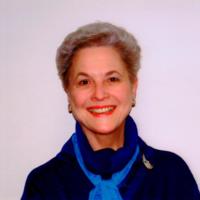
Jo Ann N. Buller was born in northeastern Pennsylvania’s coal country. She graduated from Catholic University of America in Washington, D.C., with a major in Political Science. She held several offices in college and club organizations and worked in the college Archives. Following graduation, she started graduate school and, like many other graduate students, worked on Capitol Hill, for Senator Hugh Scott. Through her acquaintance with speech writers in Washington, she made connections with Radio Free Europe in New York, where she worked in the library and did research. Following a two-year position in publicity and fund-raising at Mt. Holyoke College, she became a consumer representative at Scott Paper Company’s executive offices at Philadelphia International Airport. She married Carter Buller in 1965, and they bought 241 Delancey Street the same year, beginning a decades-long renovation project. While a resident of Society Hill, she founded Walking Historical Architectural Tours and served on the boards of the Landmarks Society and Historic St. Peter’s Church Preservation Corporation. She was a co-founder of Penn’s Village, which is celebrating its 10th anniversary in 2018. Until 2015, she worked as a travel consultant for Travel Anywhere. The idea behind Project Philadelphia 19106 was Jo Ann’s, and she first presented the notion to her fellow poll workers at the 5th Ward, 18th Division’s polling place on a rainy, slow primary Election Day in 2004.
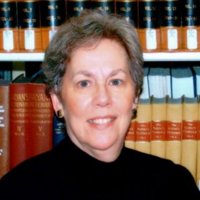
Cynthia J. Eiseman, Ph.D. was born in Berkeley, California, in 1944. She attended Berkeley High School and graduated from the University of California at Santa Barbara with a major in Classics. Following college, she pursued M. A. and Ph. D. degrees in Classical Archaeology at the University of Pennsylvania, where she studied with George F. Bass, a pioneer in the nascent field of maritime archaeology. She participated in excavations of Roman, Middle Bronze Age, and Byzantine/Islamic shipwrecks in Turkey and a late-5th century B.C. wreck at Porticello, Italy, which became the topic of her dissertation. Together with Prof. Brunilde S. Ridgway of Bryn Mawr College, she published the definitive site report of the Porticello shipwreck (1989, Texas A & M University Press). When George Bass left the University of Pennsylvania in 1973 and founded an independent non-profit organization, the Institute of Nautical Archaeology, Cynthia became the Institute’s first Executive Director. She held that position until 1976, when the Institute affiliated with Texas A & M University.
While a graduate student, she worked as the department secretary for the Urban Design program in the University of Pennsylvania’s Graduate School of Fine Arts, as it was then called. In that position she was introduced to the fields of city planning, the built environment, and Philadelphia’s architectural history—subjects that have interested her ever since. In 1972, she married James Eiseman, Jr., an attorney at the Philadelphia law firm Drinker Biddle & Reath. In 1973, they bought 314 S. Philip Street, where they lived until 2015. They renovated the house twice. During the second renovation, Jim said to her, “I don’t know why you think you need a new kitchen every 35 years,” to which she replied, “I don’t know why you think you need dinner every night.” Following an 18-year career in Archaeology, Cynthia became a fund-raising executive. She worked for four cultural or educational nonprofit organizations in Philadelphia. As a resident of Society Hill, she volunteered for numerous organizations, including the Head House Conservancy, the Philadelphia Chamber Ensemble, Historic St. Peter’s Church Preservation Corporation, and the Organizing Committee of the Friends of Independence Branch Library.
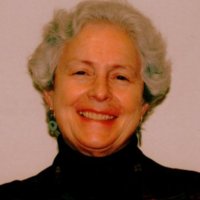
Karen D. Stevens (1943-2020) was the Archivist and Manager of the Library for Independence National Historical Park in Philadelphia, PA. Prior to her National Park Service tenure at INHP, she served a year with the Kansas State Historical Society in Topeka, Kansas, as the Andrew W. Mellon Foundation/National Historical Publications and Records Commission Fellow in archival administration, the fellowship administered by NARA. Previously, she was a consulting archivist for the City of Philadelphia Archives and the Presbyterian Medical Center. During her archival career, Karen was employed by the Academy of Natural Sciences of Philadelphia and the University of Pennsylvania Archives and Records Center. She began her professional career as a branch librarian with the Free Library of Philadelphia; she also served as the librarian with the Morris Arboretum of the University of Pennsylvania and the Lutheran Theological Seminary in Mount Airy, Philadelphia. Karen earned a B.A. degree in Early American history from the College of Wooster (Ohio) and a M.S. in Library Science from Simmons College, Boston. She received her archives administration post-graduate training at Temple University that included an internship with the Philadelphia Branch of the National Archives and Records Administration.
A resident of Society Hill since 1998 and a member of Old Pine Street Presbyterian Church, Karen returned to Center City living after residing in Chestnut Hill with her husband and two children for 28 years. She also served on the Board of Trustees, Old Pine Conservancy, whose mission is preservation of the church’s historic graveyard. As evidenced by her professional experience and personal interests, Karen had a long-time devotion to the study and promotion of American history and historic preservation, particularly as they relate to national and local historical and cultural assets in Philadelphia.
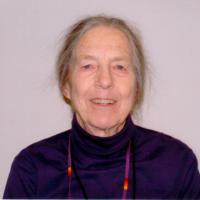
Penelope H. Batcheler (1928-2006) born in East Orange, New Jersey, in 1928, became one of the National Park Service’s leading historical architects. Ahead of her time as a woman in the field of architecture, she was the only woman on a team of half a dozen architects and preservationists who undertook to restore Independence Hall in the mid-20th century. She received her degree in Architecture from the Illinois Institute of Technology in Chicago, where she studied under Mies van der Rohe and then spent two years in Sweden documenting old stone and timber buildings. Returning to the U.S., she rented a house on Delancey Street and became involved in the restoration of historic houses, having surveyed them to learn about 18th century Philadelphia domestic architecture. She went to work for the National Park Service in 1955. In the projects to restore Independence Hall, Assembly Hall, Congress Hall, Old City Hall, Franklin Court, City Tavern, the Edgar Allen Poe House, and Old Swedes Church, she found a niche by developing an expertise in the small features of old wooden buildings, such as the types of nails used in the buildings and details of woodwork. She may be best known for having developed what became the scientific approach to analyzing and matching historic paint colors for historic buildings.
She married George Batcheler, also an architect, in 1968. In her obituary in the Inquirer, George is quoted, “She caught my eye, because she even washed windows with enthusiasm.” They made their home for 38 years on S. American Street in two houses, both of which they restored meticulously. When she retired in 1993, she did not stop working but donated her time and expertise to numerous committees and boards devoted to historic preservation, including Project Philadelphia 19106, now called Preserving Society Hill. In discussing the form that the project would ultimately take, she urged her colleagues to be certain to put the oral history narratives “in their historical and geographical context.” She generously shared her knowledge to ensure that that would happen.
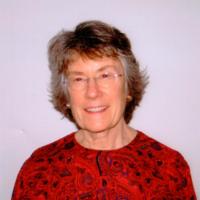
Dorothy Stevens (1936-2017) conducted the vast majority of the interviews for the oral history project. In her enthusiastic and persistent manner, she led each narrator through the list of interview questions in order to bring out the unique stories of each person's own experience. She also took most of the headshot photographs that appear on this site. Rather than conduct an interview herself, Dorothy and her husband, David, co-authored a written narrative of their Society Hill experience. Using a Q&A format, they describe the experience of living in the new house they constructed in the 100 block of Delancey Street, which they began to occupy in 1965.
Contributors
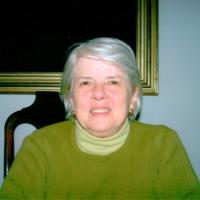
Elizabeth S. Browne specializes in early Philadelphia history with a side delight in the French language and culture. A history major at Wellesley College, she was thrilled to make her life in historic Philadelphia when she and her new husband Stanhope Browne moved into the Society Hill Towers in 1964. They went on to restore 306 South Second Street, where they lived until 2011--with time out for four years in Brussels (1972-76) and three years in Paris (1999-2002). In the historic area, Libby was deeply involved with the Friends of Independence National Historical Park and the creation of Welcome Park at Second & Sansom Streets (1982); as a tour guide, both with the Friends and independently, later working with Historic Philadelphia, Inc. on creating tours and training guides. She is passionate about the history of St. Peter’s Church at Third & Pine Streets and served as co-founder and president of Historic St. Peter’s Church Preservation Corp. and chair of the church’s 250th anniversary, which included co-authoring St. Peter’s Church: Faith in Action for 250 Years (Temple University Press, 2011). She was a co-founder of The Preservation Alliance for Greater Philadelphia and The French International School of Philadelphia. She currently lives at Cathedral Village retirement community, where she presents PowerPoint lectures to fellow residents on early Philadelphia and American history. Libby finished her late husband’s memoir of his civic work in “East Philadelphia,” of which this chapter on the fight to depress and cover 1-95 at Penn’s Landing is a major part.
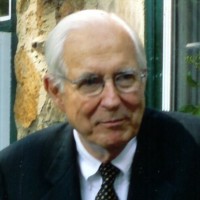
Stanhope Stryker Browne (1931-2013) was born in 1931 and raised in Colorado Springs, CO. In 1956, after studies at Princeton University and Harvard Law School, he came to work at the Philadelphia law firm Dechert Price & Rhoads. He became active in reform politics in the early 1960s and in 1964 moved with his bride Libby to Society Hill Towers; they restored their 1816 house in 1968. He very quickly became involved in the activities of the civic association merger, and soon thereafter, starting in 1965, in the fight to change the design of I-95 as it was to pass through the historic area of the city. As a result of that eventually successful effort, he joined the Board of the Penn’s Landing Corp. in 1981 and became its chair in 1982, continuing until 1996. On behalf of his law firm, he spent 1972-76 with Libby and their two children, Katrina and Whitney, in Brussels, Belgium. In 1987, he was named Honorary Consul of France in Philadelphia, a post which he held until his retirement from his law practice in 1997. During that period, he was chair of the founding committee of the French International School of Philadelphia. He served on the boards of many not-for-profit organizations during his career, to name a few: St. Peter’s Church at 3rd & Pine, The Metropolitan Christian Council, The World Affairs Council, the Old (later ‘Central’) Philadelphia Development Corp. and the French-American Chamber of Commerce. Following his retirement, he and Libby spent three happy years living in Paris, soaking up the culture, history, and beauty of that city and of all of France. He died in 2013. His love of cities, architecture, and historic preservation—along with his leadership, legal, and organizational skills—allowed him to have a lasting impact on his community of Society Hill and on the community at large.
Anne P. Meyers is a retired Certified Public Accountant who practiced primarily in the not-for-profit field of cultural organizations, special collections libraries, and historic house museums. Long interested in the issues of urban renewal, her clients also included those agencies responsible for the development of Society Hill. A native Californian, she and her family lived in Society Hill from 1964 to 1993, but she and her architect husband never restored an historic house. From 1995 to 2001, she was the Controller at The Huntington Library, Art Collections and Botanical Gardens in San Marino, California. She returned to Society Hill in 2001 to 2011, when she retired and moved to Cathedral Village in northwest Philadelphia. Her volunteer work included membership on the board of the Society for the Preservation of Landmarks, the Philadelphia Chamber Ensemble, Women's Way, and Accountants in the Public Interest.
Institutional Support
This website would not have been possible without the support of several institutions.
The Digital Scholarship Group at Penn Libraries and the Price Lab for Digital Humanities supported the development of an earlier version of this website. Thanks especially to Laurie Allen, Sasha Renninger, Girmay Misgna, and Rachel Cohen (PhD'18) for their design and development work.
The Graduate Program in Historic Preservation and Center for Undergraduate Research and Fellowships (CURF) provided support for Penn undergraduate and masters students to serve as research assistants on the project. Thanks especially to Amani Bey ('19), Gabrielle Goldstein (MSHP'21), Arielle Harris (MSHP'17), Meredith Seiz Johnson (MSHP'19), Melina Lawrence ('21), Zhen Ni, Katherine Randall (MSHP'19, MCP'19), and Sarah McHale Scott (MSHP'19, MCP'19) for their painstaking work in organizing and digitizing much of the content for the website.
The University Research Foundation (URF) at the University of Pennsylvania's Office of the Vice Provost for Research provided funding to enable the creation of a second (current) version of this website, which was designed and developed by Interactive Mechanics.
Finally, this project is built upon the collections of a variety of institutions across Philadelphia, the archivists and curators of which have greatly facilitated this project. Thanks especially to the Special Collections Research Center at Temple University Libraries, the Athenaeum of Philadelphia, City Archives of Philadelphia, the Free Library of Philadelphia, and the Architectural Archives of the University of Pennsylvania.